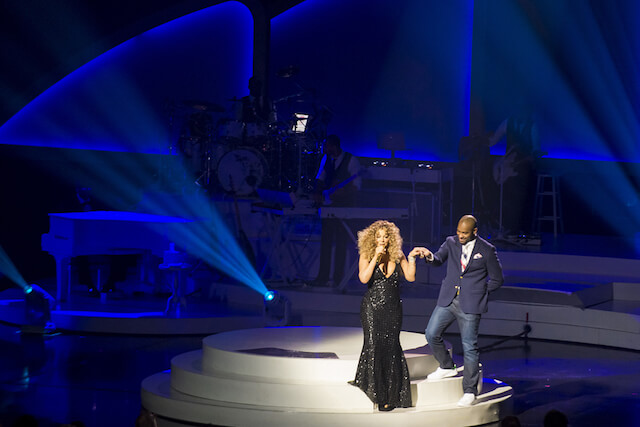In the art of singing, much emphasis is placed on technique, range, and emotion. Yet, one aspect that often goes unnoticed but plays a significant role in shaping vocal quality is resonance. Resonance, the amplification and enrichment of sound produced by the vibration of air in certain spaces, is not only crucial for projection and tone but is also deeply influenced by the environment in which we sing.
In this exploration, we delve into the fascinating realm of vocal resonance and how different spaces can impact your singing.
Understanding Vocal Resonance
Before we discuss the influence of spaces on vocal resonance, let’s grasp the concept itself. Resonance occurs when the vibrations produced by the vocal cords are amplified and enriched by the cavities in our throat, mouth, and nasal passages. These cavities act as resonators, shaping the sound waves and giving our voice its unique timbre and character.
There are three main areas where resonance occurs:
- Chest Resonance: Also known as chest voice, this is the lower register of the voice where vibrations are felt in the chest. It provides depth and richness to the sound, often associated with power and warmth.
- Head Resonance: Head voice refers to the higher register, where vibrations resonate in the head and nasal cavities. It adds brightness, clarity, and agility to the voice.
- Mask Resonance: This refers to the area around the nose and cheekbones. Mask resonance adds brilliance and projection to the sound, enhancing its clarity and carrying power.
The Influence of Different Spaces
Now, let’s explore how various spaces impact vocal resonance:
1. Rehearsal rooms and studios
Rehearsal rooms and studios are common spaces for vocal practice. These environments are typically designed with acoustics in mind, aiming to provide optimal conditions for sound production. The controlled acoustics in these spaces ensure that singers can hear themselves clearly, allowing for better pitch accuracy and tone control.
In small rehearsal rooms, the sound tends to be more contained, promoting a sense of intimacy and focus. Singers may find it easier to access their chest resonance in these spaces, as the closed walls help reinforce lower frequencies. Conversely, larger studios with more open spaces may encourage singers to explore their head and mask resonance, as the sound can reverberate more freely, enhancing brightness and projection.
2. Performance venues
Performance venues come in various shapes and sizes, each with its own acoustic characteristics. From intimate coffeehouses to grand concert halls, the acoustic properties of these spaces can significantly impact vocal resonance and overall performance.
In smaller venues, such as cafes or small theatres, singers may rely more on chest resonance to fill the space and connect with the audience. The proximity of the audience also allows for a more intimate sound, with nuances in tone and expression readily perceptible.
Conversely, larger concert halls and auditoriums pose different challenges. While these spaces offer greater opportunities for resonance and projection, they also require singers to adapt their technique accordingly. Utilising head and mask resonance becomes essential for cutting through the ambient noise and reaching the far corners of the venue.
3. Outdoor settings
Outdoor settings present a unique acoustic environment characterised by open space and natural elements. Whether performing in a park, garden, or amphitheatre, singers must contend with ambient noise, wind, and other environmental factors that can affect vocal resonance.
In outdoor settings, singers may need to rely more on head and mask resonance to overcome background noise and maintain clarity. Additionally, the absence of walls and ceilings can result in less reverberation, requiring singers to adjust their technique to compensate for the lack of acoustic support.
Conclusion
Vocal resonance is a multifaceted aspect of singing that is profoundly influenced by the spaces in which we perform. Whether in rehearsal rooms, performance venues, or outdoor settings, each environment presents its own acoustic challenges and opportunities. By understanding how different spaces impact vocal resonance, singers can adapt their technique accordingly, enhancing their ability to communicate effectively and connect with audiences on a deeper level.
If you’re looking to attend singing classes in Singapore, Studio72 is the music school to turn to. Our teachers are not only qualified to teach vocal lessons in Singapore but also are well-established in the local music scene. Chat with us here to find out more.






